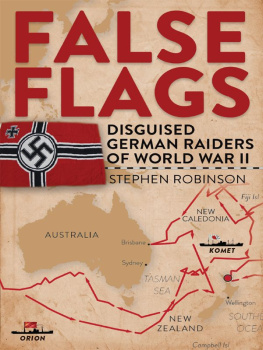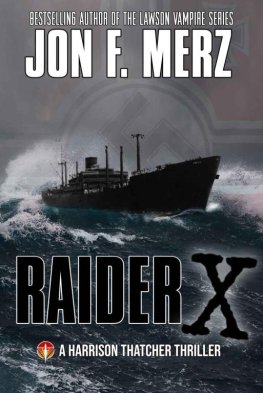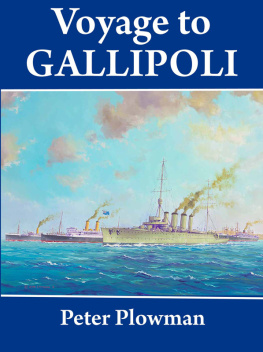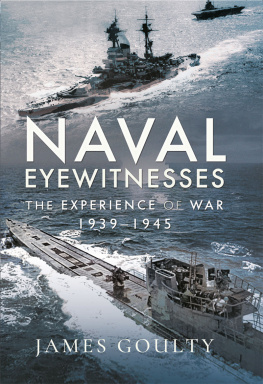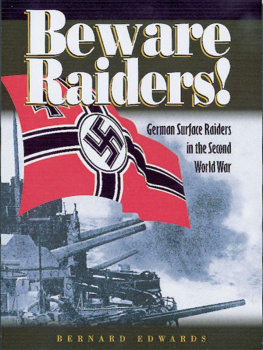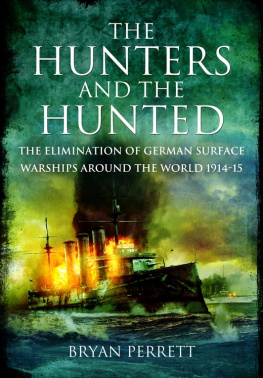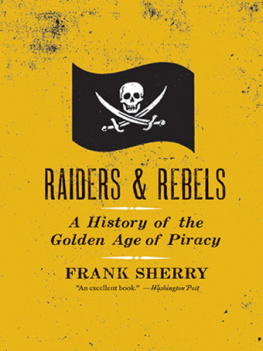In 1940, the commerce raiders Orion, Komet, Pinguin and Kormoran left Germany disguised as neutral freighters. Flying false as part of Nazi Germanys strategy to attack the British Empires maritime trade on a global scale, they waged a deadly pirate war in the South Seas, sinking or capturing 62 ships.
During their voyages, the four raiders created chaos across the Atlantic, Pacific and Indian oceans before terrorizing Australian and New Zealand waters. They also operated in freezing Arctic and Antarctic seas, as well as in tropical waters near Madagascar and the Galpagos Islands.
Before the Japanese attack on Pearl Harbor, the Orion and Komet hunted Allied freighters in seemingly peaceful South Pacific and New Zealand waters. The Pinguin daringly raided the Indian Ocean before mining the approaches to five Australian ports and capturing the Norwegian whaling fleet in Antarctica. The Kormoran successfully ravaged the Atlantic but will always be remembered for sinking the Australian cruiser Sydney off Western Australia, killing all 645 sailors on board in tragic circumstances.
False Flags is also the story of the Allied sailors who encountered the raiders and fought suicidal battles against a superior foe. Additionally, it describes the experiences of the men, women and children who endured captivity on board the raiders as prisoners of the Third Reich.
Spanning the globe, the little-known but extraordinary voyages of the auxiliary cruisers Orion, Komet, Pinguin and Kormoran are epic maritime sagas in the finest tradition of seafaring. False Flags tells the story of their forgotten naval war, fought in waters far from Germany.
FALSE FLAGS
DISGUISED GERMAN
RAIDERS OF WORLD WAR II
STEPHEN ROBINSON

First published 2016
Exisle Publishing Pty Ltd
Moonrising, Narone Creek Road, Wollombi, NSW 2325, Australia
P.O. Box 60-490, Titirangi, Auckland 0642, New Zealand
www.exislepublishing.com
Copyright 2016 in text: Stephen Robinson
Stephen Robinson asserts the moral right to be identified as the author of this work.
All rights reserved. Except for short extracts for the purpose of review, no part of this book may be reproduced, stored in a retrieval system or transmitted in any form or by any means, whether electronic, mechanical, photocopying, recording or otherwise, without prior written permission from the publisher.
A CiP record for this book is available from the National Library of Australia.
Print ISBN 978 1 925335 15 6
ePub ISBN 978 1 77559 302-7
Designed by Nick Turzynski of redinc. book design
Maps by Nick Turzynski of redinc. book design
Disclaimer
While this book is intended as a general information resource and all care has been taken in compiling the contents, neither the author nor the publisher and their distributors can be held responsible for any loss, claim or action that may arise from reliance on the information contained in this book.
To my parents David and Alison
CONTENTS
#xa0;
#xa0;
INTRODUCTION
The German auxiliary cruisers Orion, Komet, Pinguin and Kormoran terrorized the high seas in a forgotten naval campaign during the early years of World War II. After departing Germany, these raiders voyaged across the Atlantic, Pacific and Indian oceans, as well as the Arctic and Antarctic, sinking Allied merchant ships in Australian and New Zealand waters, and near exotic locations, such as Madagascar and the Galpagos Islands. Their extraordinary voyages are maritime sagas in the finest tradition of seafaring, and they fought a successful pirate war in the middle of the twentieth century, sinking or capturing sixty-two ships.
The Orion and Komet raided the South Pacific before the Japanese attack on Pearl Harbor, when the war was supposed to be far away, and in this seemingly quiet backwater they mined New Zealand waters and destroyed the Allied phosphate ships at Nauru. The Pinguin operated extensively in the Indian Ocean before audaciously mining the approaches to five Australian ports and capturing the Norwegian whaling fleet in Antarctic waters. Ultimately she became Germanys most successful raider, accounting for three times more tonnage than the famous pocket battleship Admiral Graf Spee. The Kormoran successfully hunted merchantmen in the Atlantic before entering the Indian Ocean where she encountered the Australian cruiser HMAS Sydney. In one of the strangest naval engagements in history, the Kormoran sank the Australian warship but the crew scuttled their raider after she sustained irreversible damage. Most German sailors survived but all 645 men on board the Sydney perished in tragic circumstances.
The Allied sailors who encountered these raiders often fought suicidal battles against a vastly superior foe, and their courage often saved other ships. Many unfortunate sailors and passengers, including women and children, endured captivity on the raiders, where unlikely relationships formed. Most prisoners expected sadistic treatment at the hands of the Hun but the genuinely humane conduct of the raider crews, in most cases, transformed their fear into admiration.
The naval planners in Berlin co-ordinated the raider war while their opposite numbers in Britain, Australia and New Zealand desperately tried to stop the onslaught. The British Admiralty selected Sub-Lieutenant Patrick Beesly, an energetic young officer in the Naval Intelligence Division, to analyze raider operations and he fought a war in the shadows alongside his colleague Ian Fleming, who later based his James Bond novels on his wartime experiences.
As the Soviet Union and Japan provided clandestine support to the raiders, much intrigue, espionage and diplomacy surrounding their voyages unfolded in Moscow and Tokyo. The German naval attach in Russia, Kapitn Norbert von Baumbach, exploited the NaziSoviet Pact to secure assistance for the raiders from a strangely willing Soviet Navy. Konteradmiral Paul Wenneker, the naval attach in Japan, meanwhile obtained support from the technically neutral Japanese Navy while Allied diplomats plotted to sabotage his efforts.
Vic Marks, an Australian sailor, became a prisoner on the Orion in the South Pacific. After being transported to occupied France on the blockade runner Ermland, he experienced four years of captivity in Germany before returning home in 1945. Decades later, feeling forgotten, he wrote to a newspaper in 2001:
Most people know of the sinking of HMAS Sydney by the raider Kormoran but few know about the sinking of 10 ships by the Orion and Komet in [and] near Australian and NZ waters in the Pacific with a heavy loss of seamens lives.
The story of this forgotten raider war has finally been told and does justice to men like Vic Marks, who will be remembered.
#xa0;
CHAPTER 1
THE RAIDERS PREPARE
Apart from the auxiliary-cruiser commanders and their crews, credit for their successes is shared by the commanders and crews of the supply ships, oil tankers and mother ships, by the engineers who converted them for their tasks, and by all the numerous experts and others in the naval department and the shipyards who took part in the preparation and maintenance of the ships.
Grossadmiral Erich Raeder
Commander-in-Chief of the Kriegsmarine
AN UNEXPECTED CONFLICT
Next page
